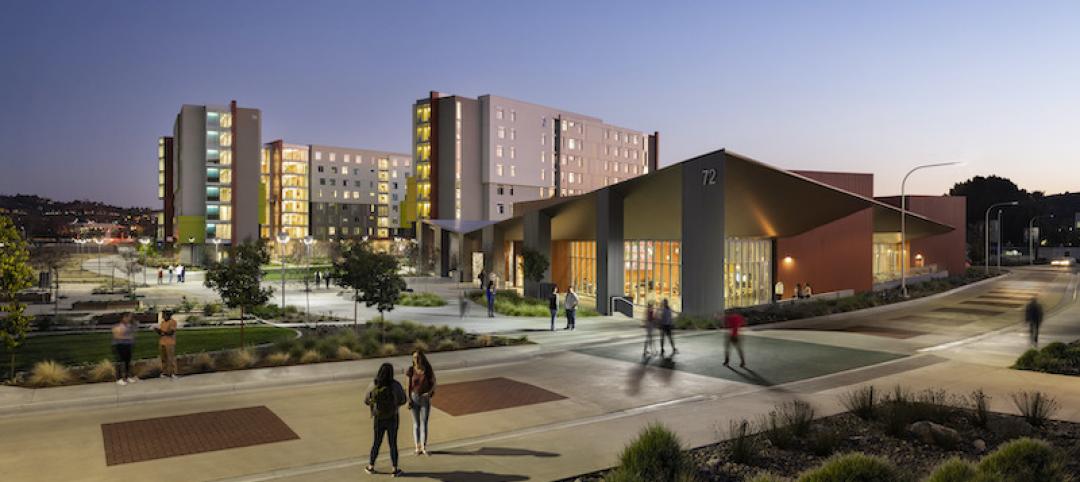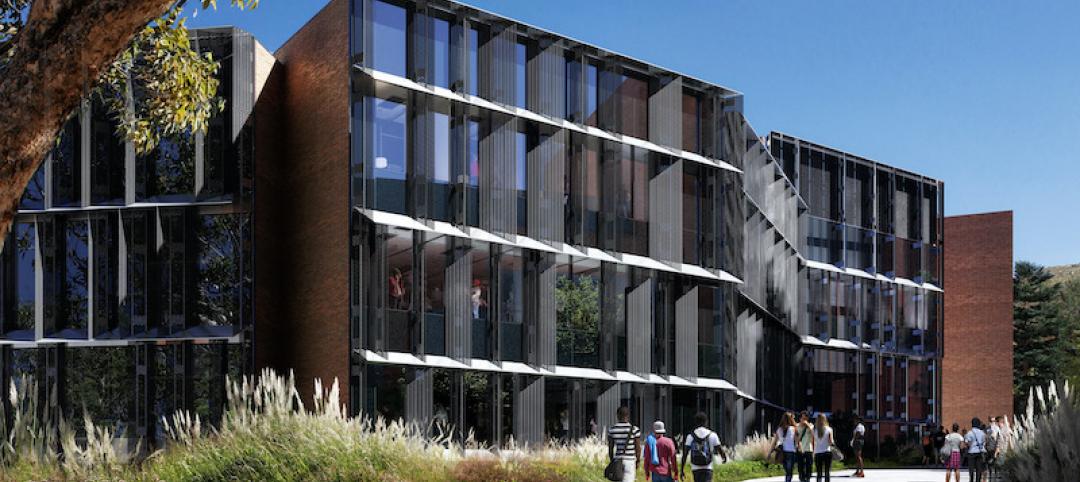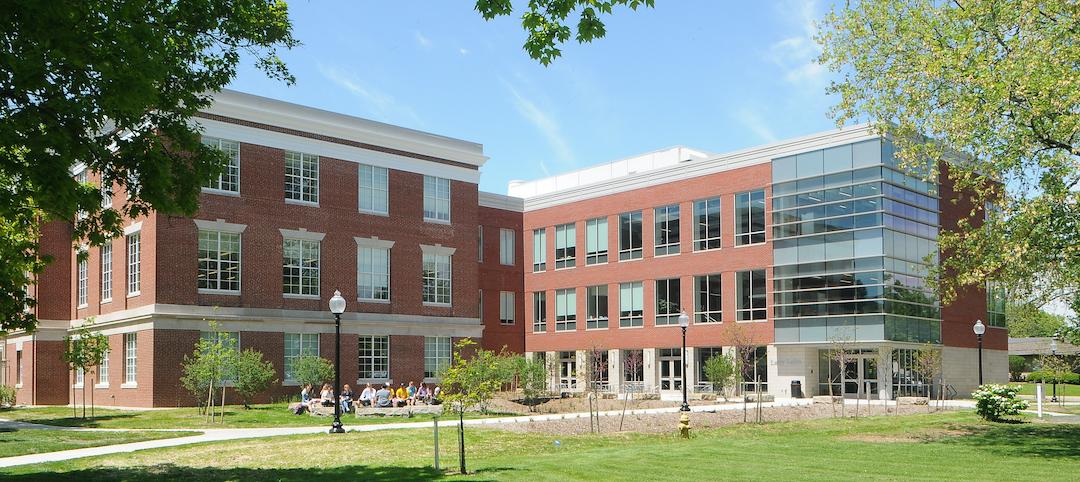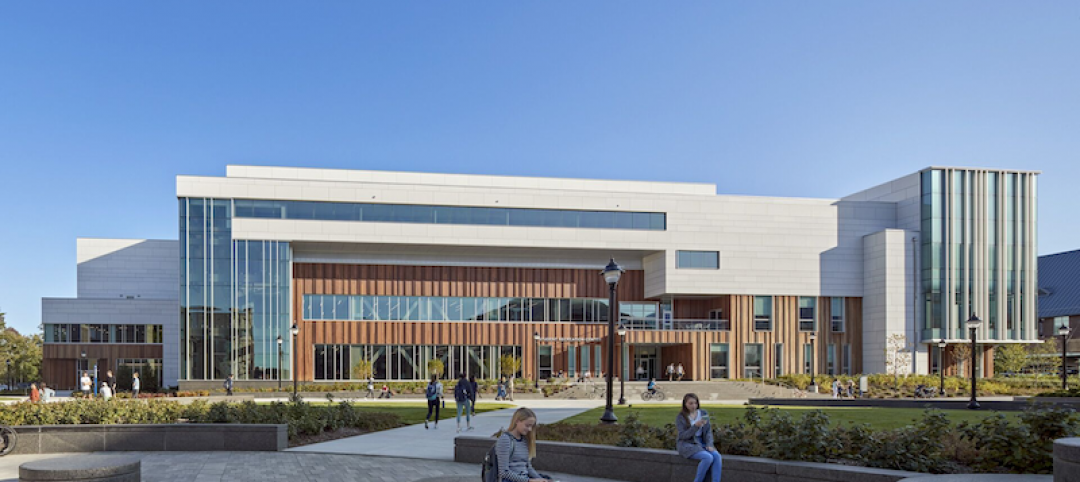Des Moines University Medicine and Health Sciences has opened a new campus spanning 88 acres, over three times larger than its previous location.
Designed by RDG Planning & Design and built by Turner Construction, the $260 million campus features technology-rich, flexible educational spaces that promote innovative teaching methods, expand research activity, and enhance clinical services. The campus includes four buildings connected with elevated pathways and totaling 382,000 sf.
The five-floor Edge of Advancement building serves as the front door to the campus and includes administration, event and learning commons, alum hall, and student support spaces. The Innovation building includes academic and dining programs, as well as a simulation center where students can practice providing care and performing surgery. And the Health and Wellbeing building offers recreation facilities, clinic, and counseling suites. The project also includes a campus support building with parking.
The new campus, which has achieved LEED Silver certification, has 700 geothermal wells for energy-efficient systems. With significantly reduced energy consumption and carbon emissions, the project achieves a 56% reduction in electric use and 65% reduction in embodied carbon.
To promote mental health and wellbeing, the campus integrates multiple green and gathering spaces. The site features a new pond and connects with local trails.
“With its 125-year legacy of excellence in medical and health science education, DMU has long been leading the way in holistic healthcare education,” Mike Houston, RDG planner and senior partner, said in a statement. “Collaborating with the university on this project allowed us to push the boundaries of what a health sciences campus can achieve.”
Founded in 1898, DMU comprises three colleges offering 10 graduate degrees in medical and health sciences.
On the building team:
Design architect and architect of record: RDG Planning & Design
MEP engineer: IMEG
Structural engineer: KPFF
Construction manager: Turner Construction
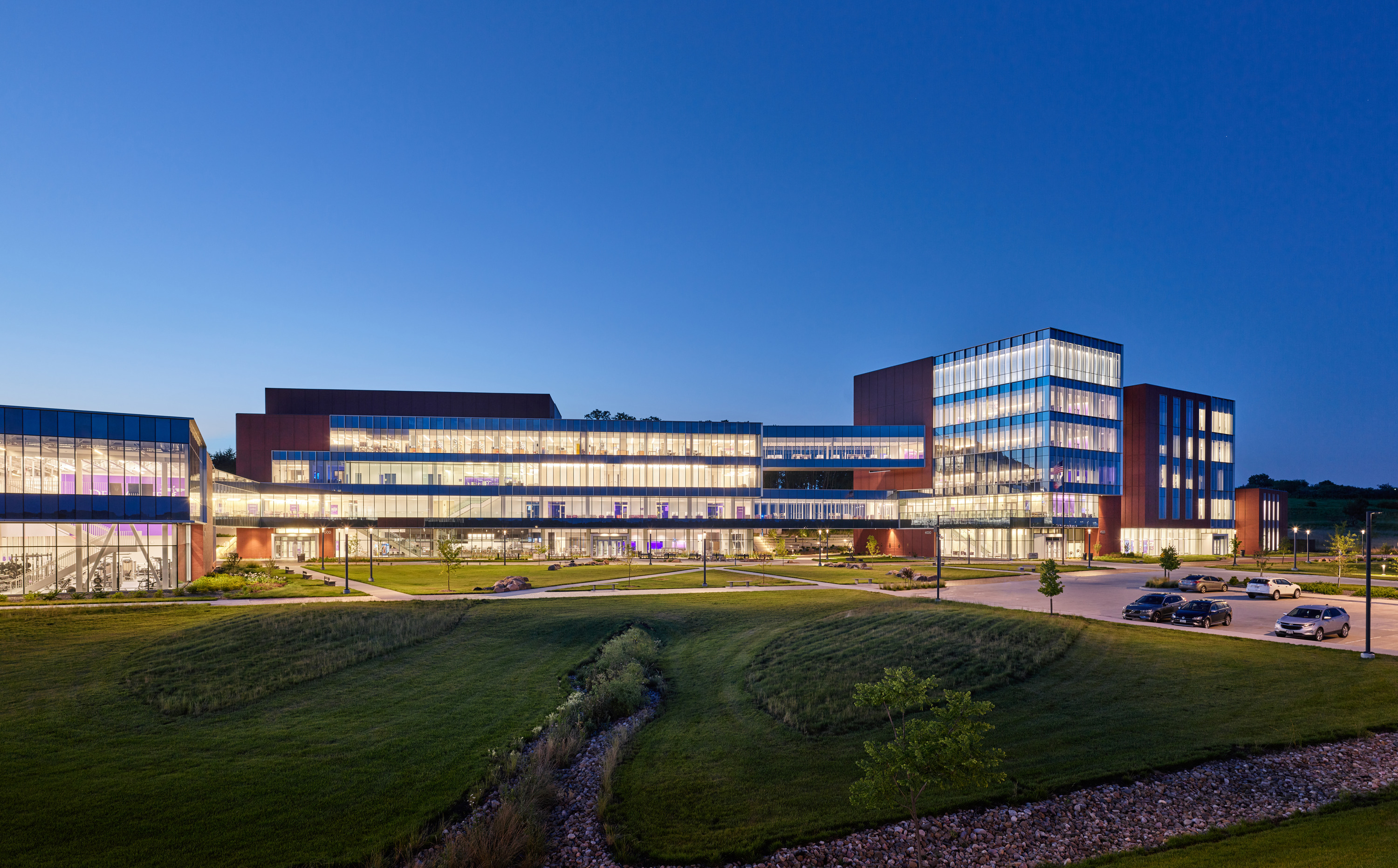
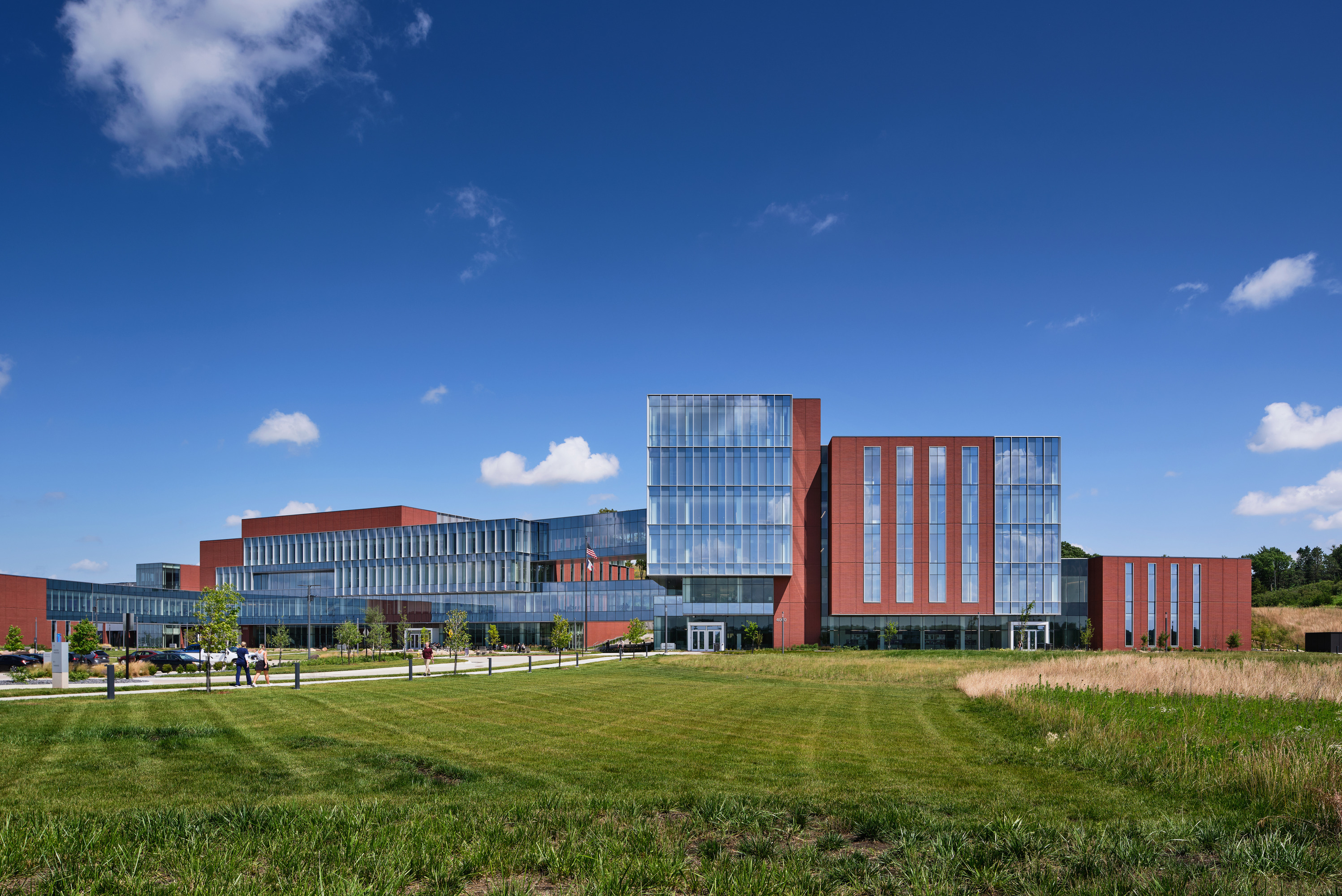
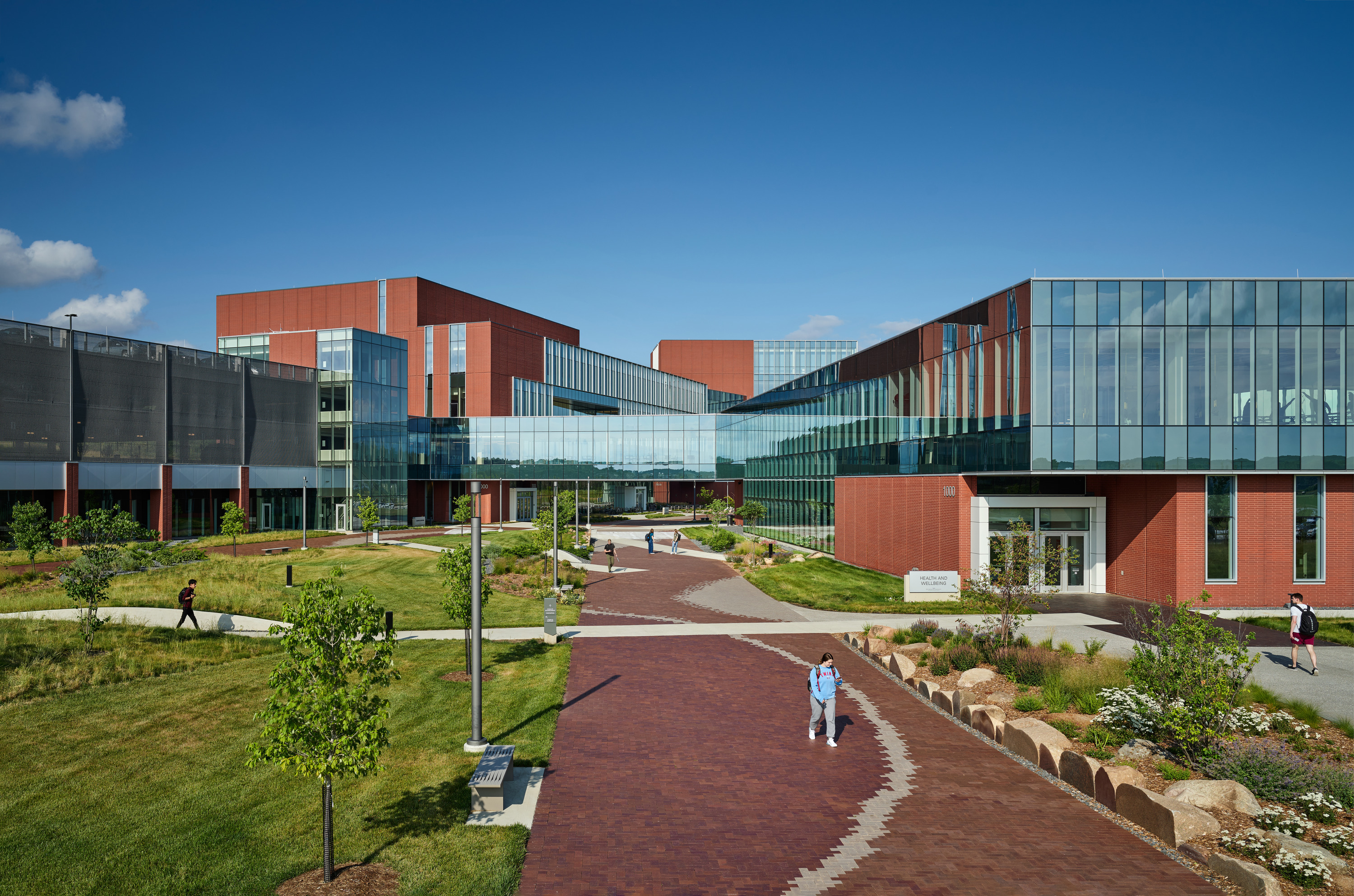
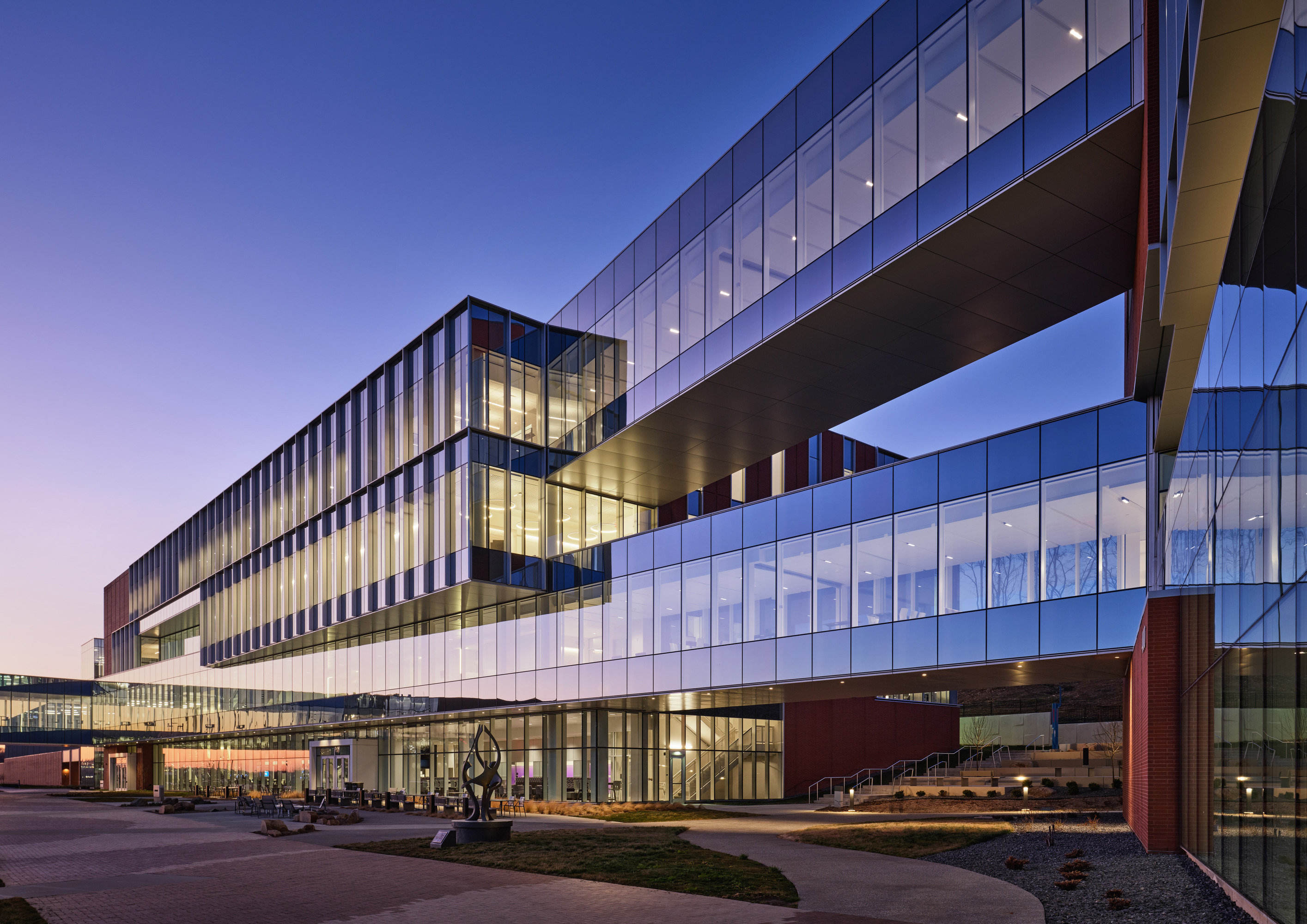
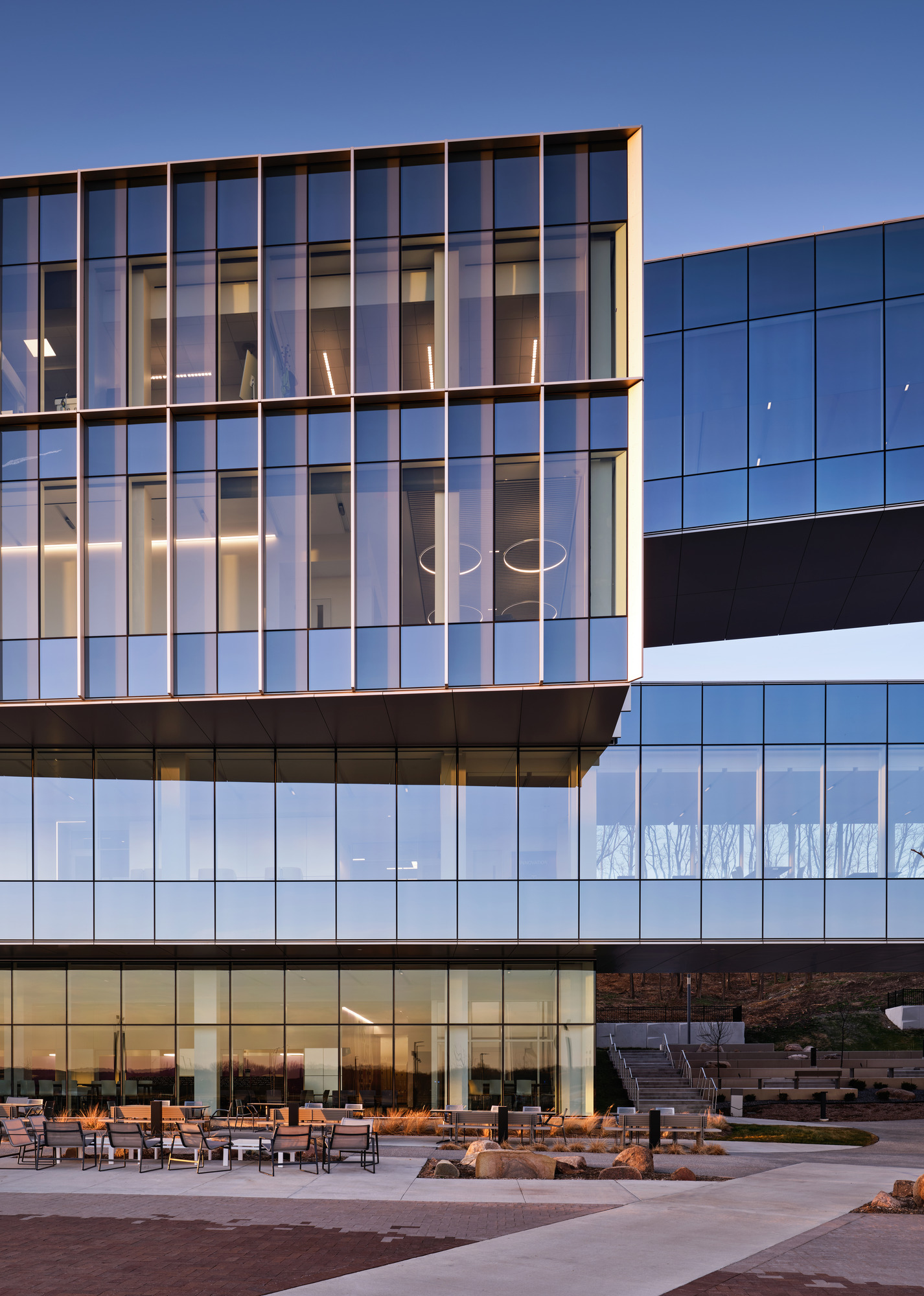
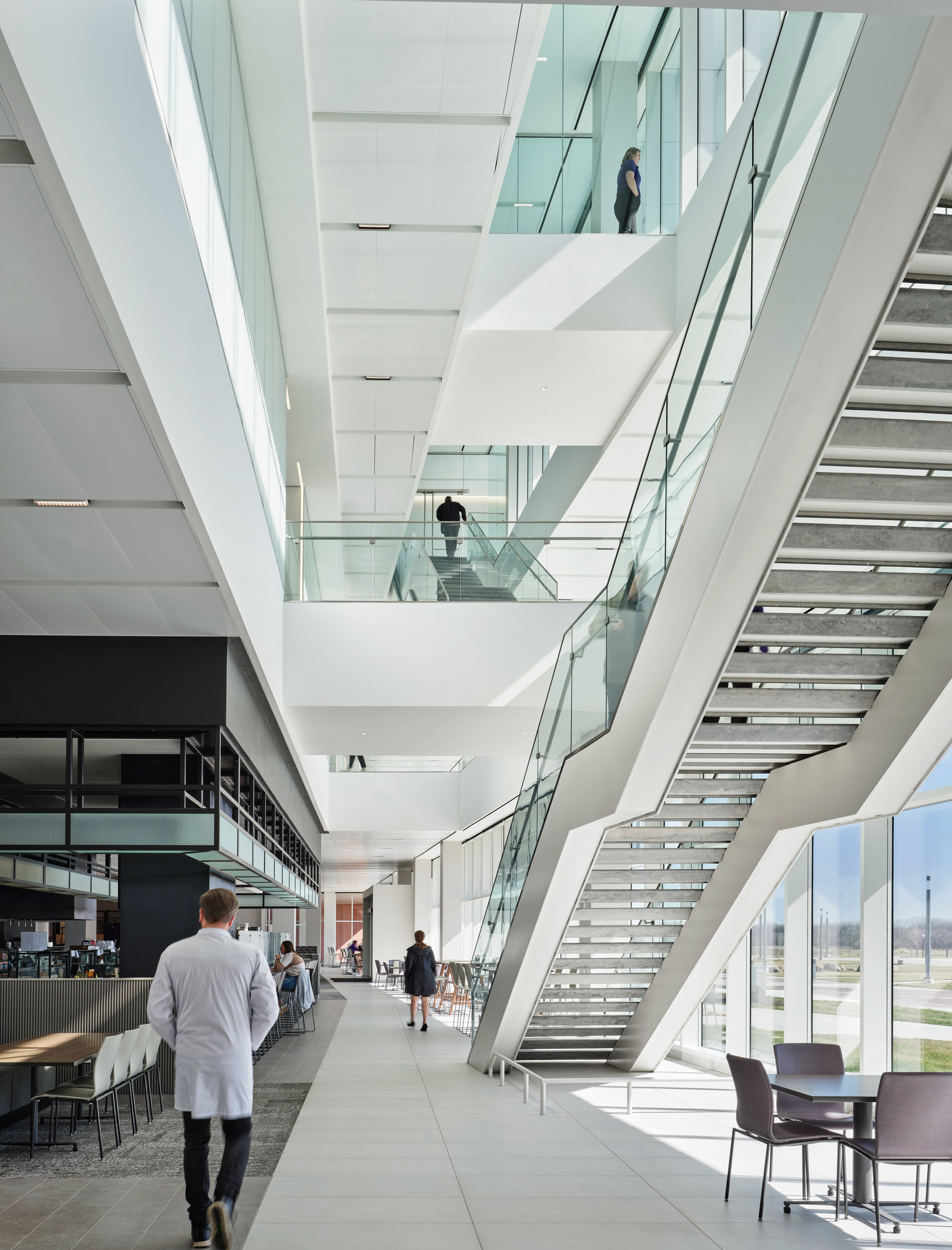
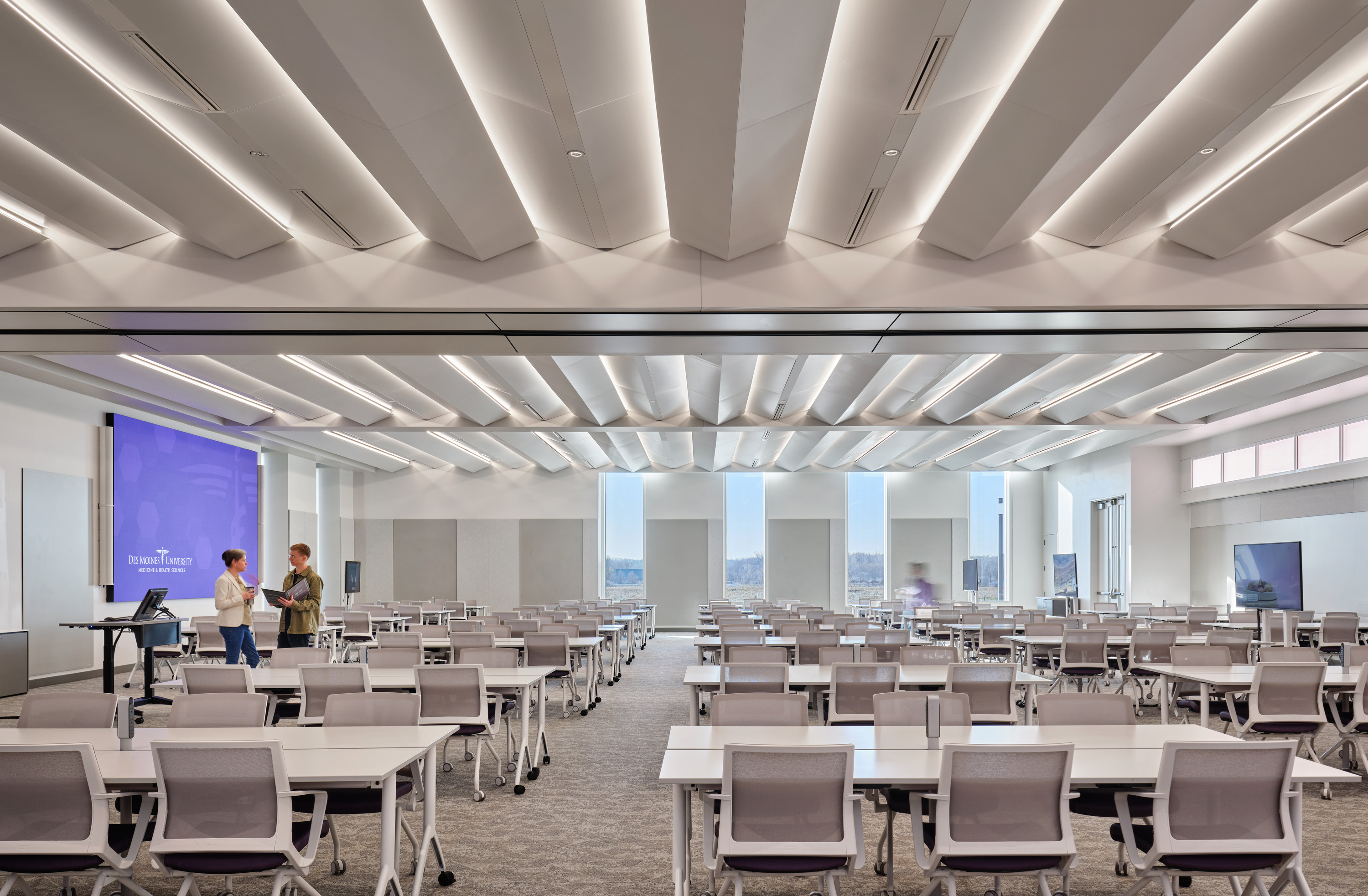
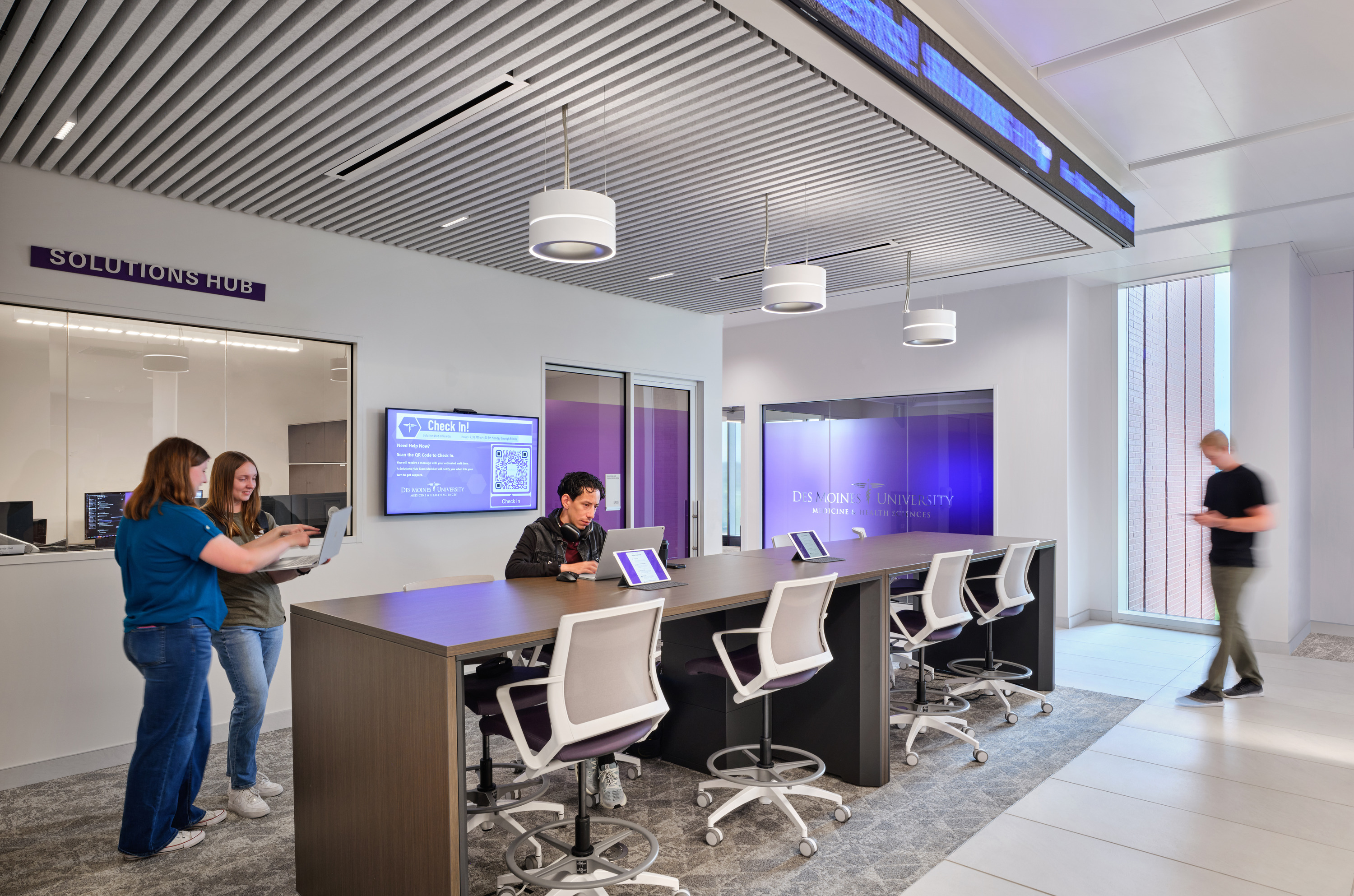
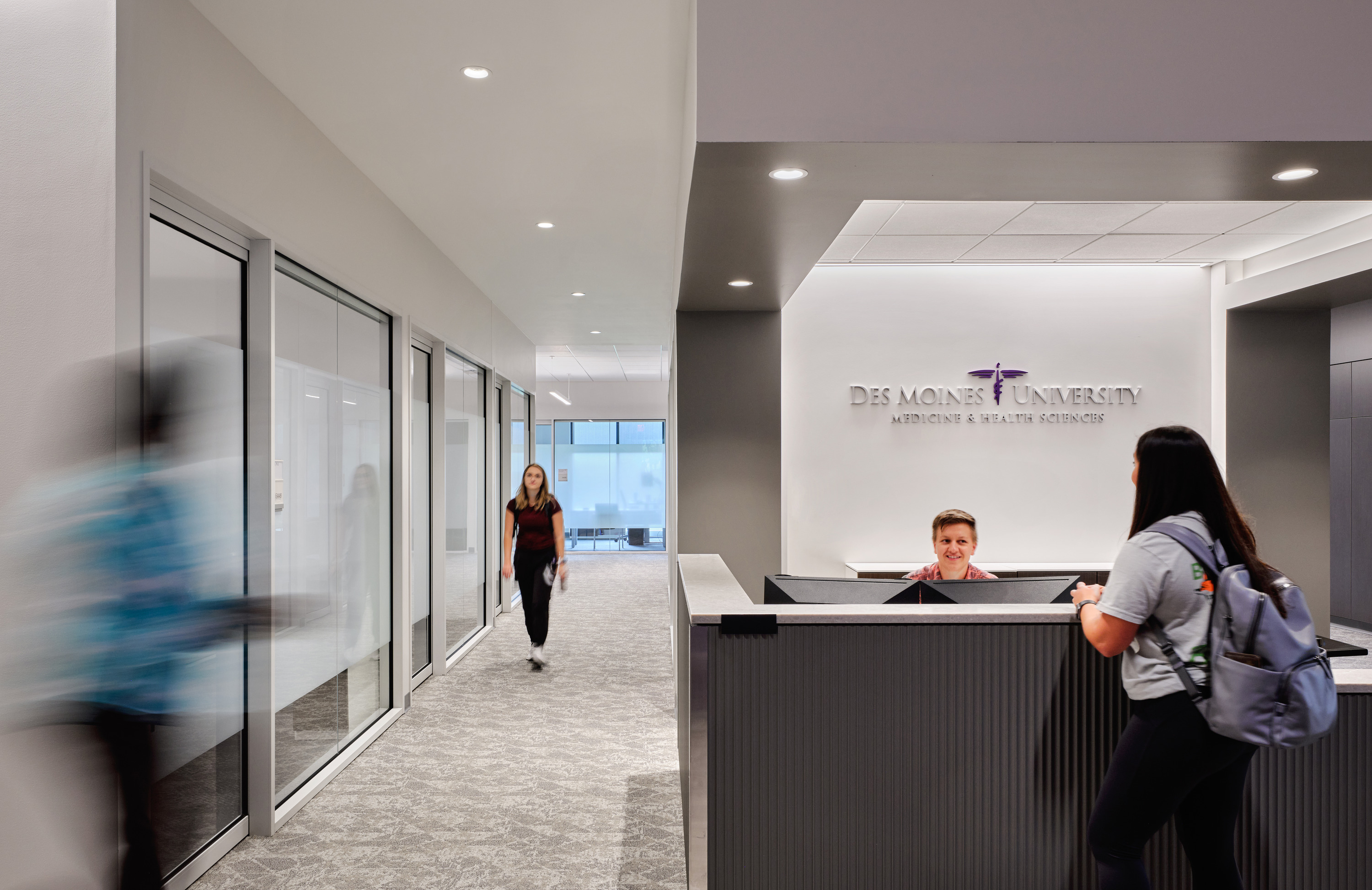
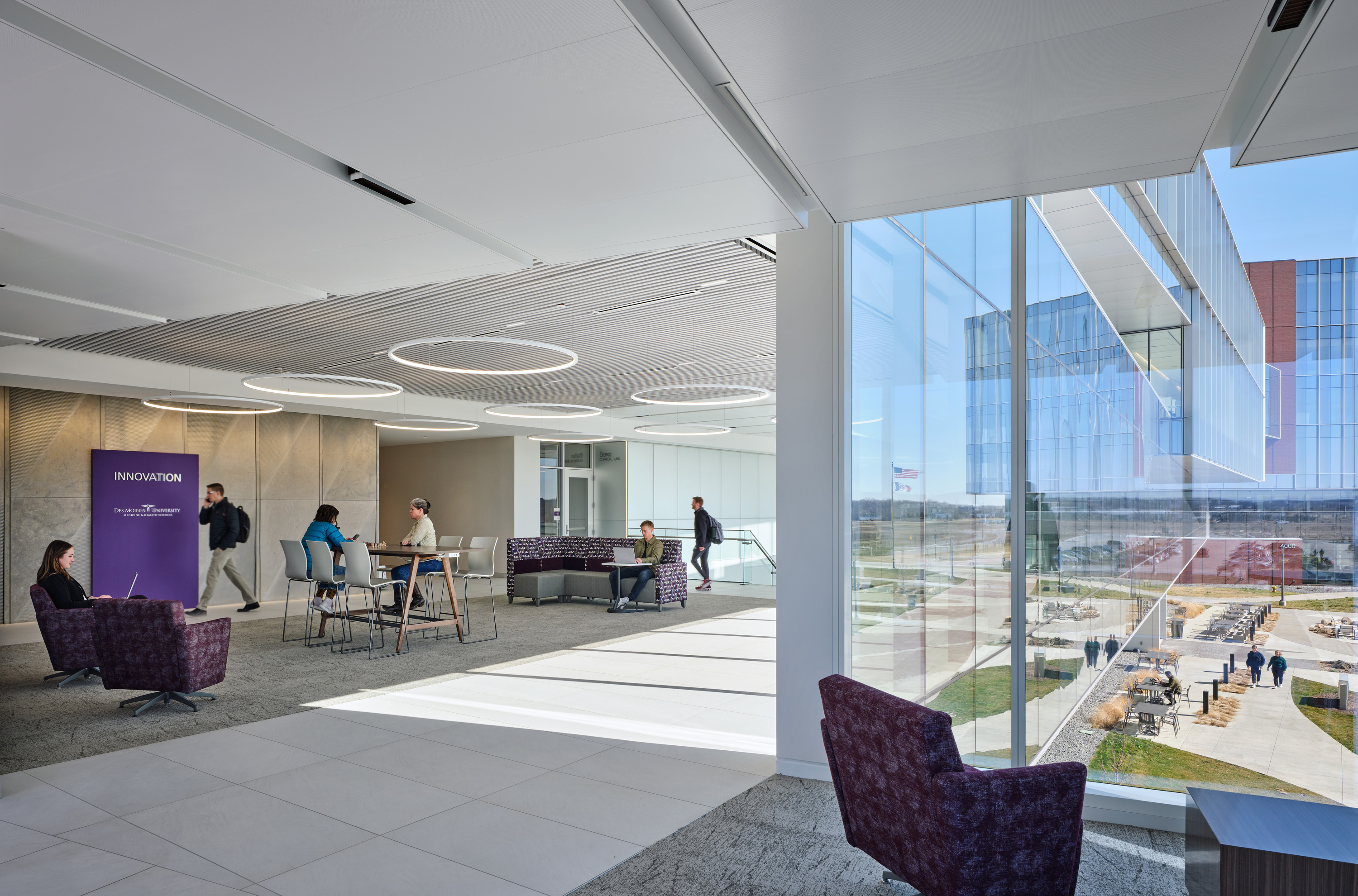
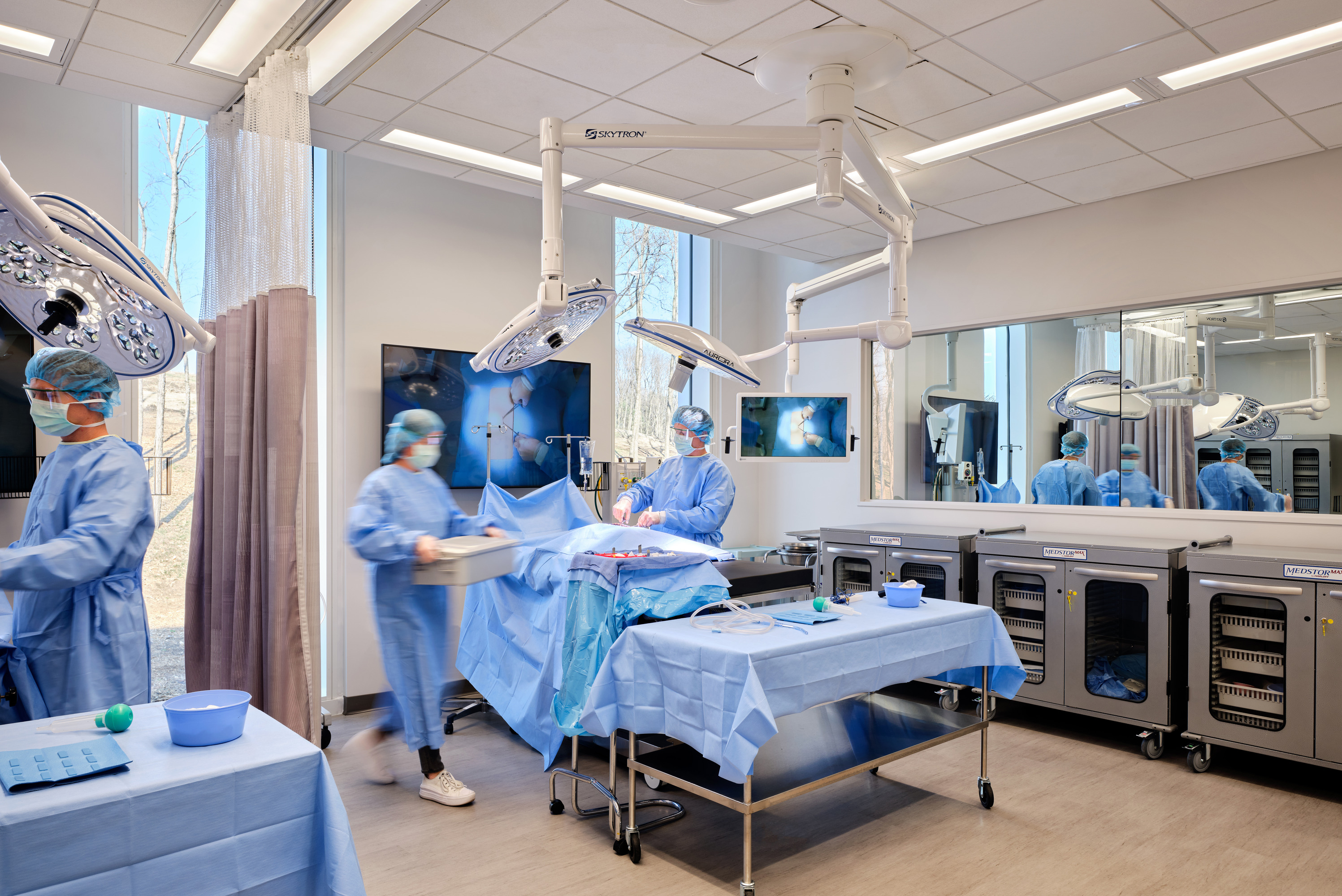
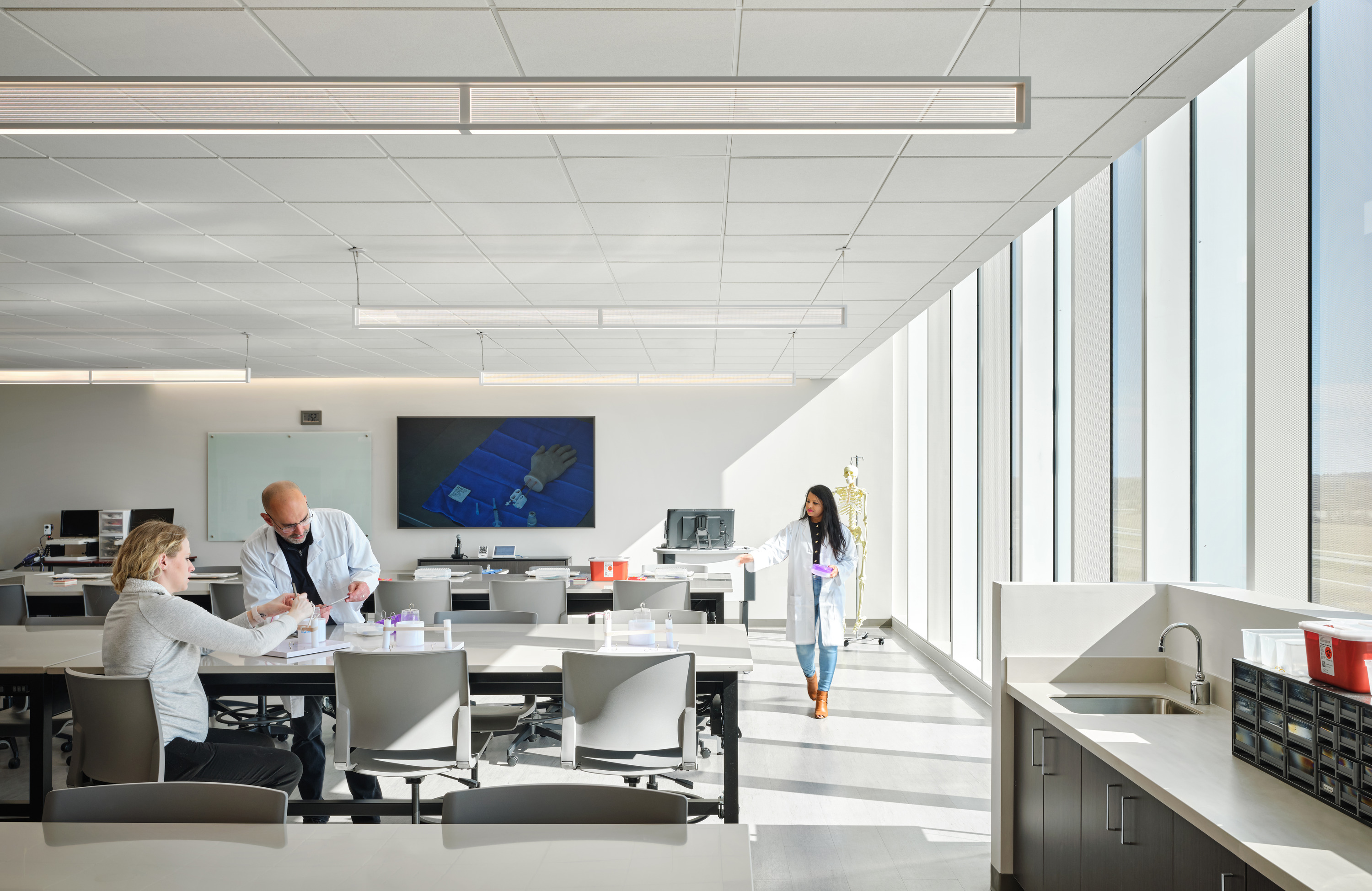
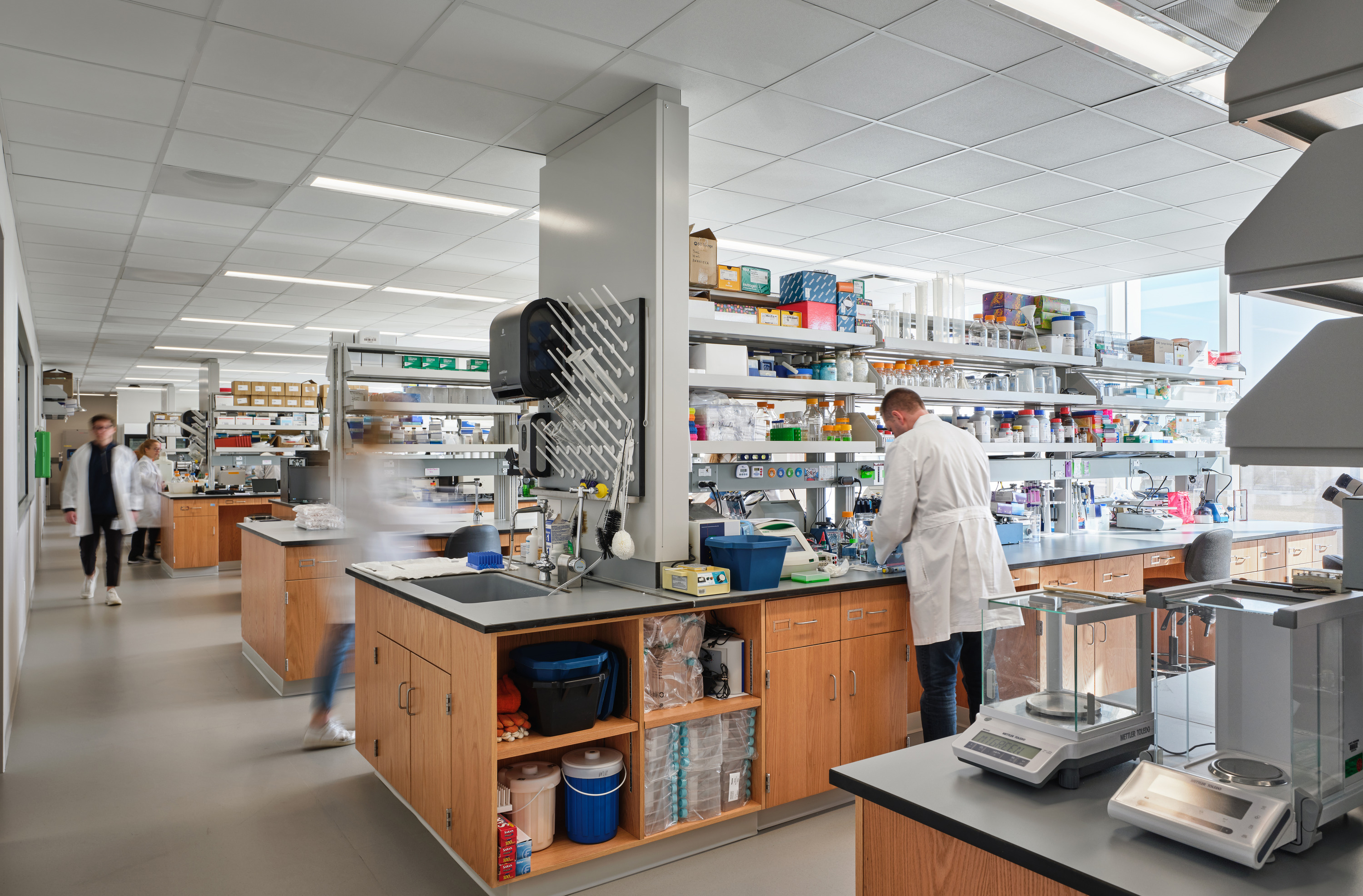
Related Stories
University Buildings | Jul 23, 2020
Two eight-story residential towers and a dining commons complete on Cal Poly Pomona’s campus
HMC Architects designed the project.
University Buildings | Jul 15, 2020
New Cal Poly Research and Innovation Center includes features for a COVID-19 world
ZGF Architects is designing the building.
University Buildings | Jul 14, 2020
Cornell College partners with Johnson Controls to improve campus energy efficiency
The plan will reduce the college’s energy usage by 20%.
University Buildings | Jun 3, 2020
Renovation can turn older university buildings into high-performing labs
David Miller of BSALifeStructures offers technical advice on renovation of college and university laboratories and scientific research facilities.
University Buildings | Jun 2, 2020
COVID-19 and teaching the next generation of nurses
COVID-19 hasn’t just upended healthcare delivery, the workplace, and all levels of education – the economic toll is still being realized – and capital projects on college and university campuses will inevitably be impacted as public and privately funded projects adjust to the budget crunch.
University Buildings | May 20, 2020
JCJ Architecture, Moody Nolan complete UCONN's Student Recreation Center
The project sits at the center of the Storrs campus.
University Buildings | May 19, 2020
Clemson's new Outdoor Education Center uses a Mass Timber Structural System
Cooper Carry designed the project.
University Buildings | Apr 29, 2020
Dixie State University's new Human Performance Center
Hastings+Chivetta designed the project.
Coronavirus | Apr 10, 2020
COVID-19: Converting existing hospitals, hotels, convention centers, and other alternate care sites for coronavirus patients
COVID-19: Converting existing unused or underused hospitals, hotels, convention centers, and other alternate care sites for coronavirus patients
University Buildings | Apr 9, 2020
Designing for the next generation of student life: Academically aligned
Since many academic departments have been concentrated in their own buildings or portions of campus, bringing these disciplines into a shared facility is fairly new territory.



